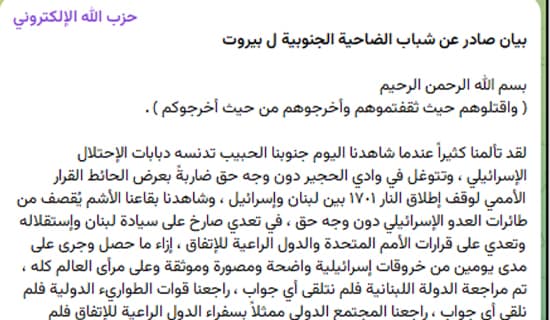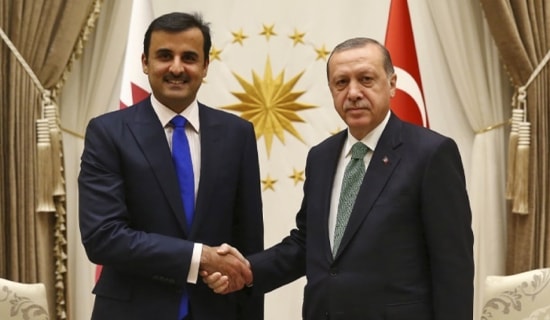Against the backdrop of the general tension between Saudi Arabia and Iran, and especially the war in Yemen, Saudi media has been replete with anti-Iranian propaganda. Many articles accused Iran of striving to destabilize and destroy the region through terrorism and violence, and cartoons depicting Iran as malicious and even demonic were published on a daily basis.
The recent bombings in two Shi'ite mosques in eastern Saudi Arabia[1] served the Saudi media as another opportunity for a harsh attack on Iran and its policy. Alongside articles that condemned the bombings and stressed the need for unity among Sunnis and Shi'ites in the kingdom, many other articles were published that held Iran responsible for the attacks, while ignoring the problem of extremism and anti-Shi'ite incitement in Saudi Arabia itself. Some editorials and op-eds described the attacks as an Iranian response to the failure of Iran's plan to take over Yemen by means of the Houthis and to destabilize and take over other countries in the region. Iran, they said, is behind ISIS and other Sunni terrorist organizations, and uses them to target the Gulf countries - especially Saudi Arabia, in order to distract it from the war against the Houthis in Yemen. Many Saudi cartoons likewise depicted Iran as a sponsor of violence and terrorism.
The following are excerpts from some of the articles, and a sampling of the cartoons.
'Al-Madina' And 'Al-Riyadh' Editorials: Mosque Attacks In Saudi Arabia Came In Response To Iranian Defeats In Yemen
Editorials in the Saudi press claimed that Iran's defeats in Yemen had prompted it to activate ISIS in Saudi Arabia. The May 26, 2015 editorial for the official Saudi daily Al-Riyadh stated: "...Anyone observing what is happening in the region can clearly see that ISIS is a militia backed by a [certain] country [hinting at Iran] that does not shy away from attacking the most dignified of sites in order to achieve its goals, while it takes advantage of the movements of chaos in the region that have provided fertile ground for destabilizing public order in [various] countries... This [activity] is aimed at facilitating that country's expansion and its establishment of itself as an alternative presence [in those countries] to fill the vacuum [created there]. We have already seen this happen in several neighboring countries. The political and military events [in the region], the most prominent of which was [Operation] Decisive Storm, caused countries in the region [again hinting at Iran] to sense a great danger threatening their destructive schemes [and] shattering their plans to 'export [the revolution].'"[2]
The May 25, 2015 editorial in the official Saudi daily Al-Madina also hinted that the Al-Qudaih attack took place due to "motives and aims that are hidden from no one, after our air force's and our heroic military's successes against... the Houthi scum in Operation Decisive Storm, thwarting the despicable Safavid [Iranian] plan" in Yemen. The editorial continued: "... It is clear that the failure of the Safavid expansionism, in its desperate attempt to sow the seeds of fitna using ISIS and other Sunni and Shi'ite terrorist organizations, has caused it to commit heinous crimes such as [the attack in Al-Qudaih], which mercilessly spill innocent blood without distinguishing Sunni from Shi'ite, man from woman, and child from elderly. As for mobilizing ISIS and other terrorists organizations [to carry out the attack]... - that is another crime, no less heinous..."[3]
Another Al-Madina editorial, published on June 1, 2015, several days after the second bombing, in Al-Dammam, stated in a similar vein: "What does it mean that ISIS has staged two consecutive attacks, both of them on Friday, on mosques in the east of the country, [and this] at a time when Saudi Arabia is leading an Arab coalition in a war against the terrorist Houthi militia that is serving Iran's interests by trying to steal Yemen, deny its Arabism and harm its security and stability? Clearly, targeting Saudi Arabia at this time is aimed at engaging it on two fronts at once, in order to take pressure off the Houthis. This means that there is no difference between the Houthis and ISIS: both are acting as agents of Tehran in the region and both follow its orders, striving to undermine the region and its stability...
"[However,] the crime in Al-Dammam and the similar crime that occurred in the east, in Al-Qudaih village, one week earlier did not fulfill the hopes of Tehran and its terrorist allies... for these evil attempts were dashed against the rock of our national unity..."[4]

Iran in suicide vest comprising ISIS fighters (Source: Al-Watan, Saudi Arabia, May 25, 2015)
'Al-Sharq Al-Awsat' Columnist: Iran Fights Saudi Arabia Using Sunni Terrorist Organizations Such As ISIS
Following the May 22 attack, Saudi journalist 'Abdallah bin Bjad Al-'Otaibi stated, in his column in the London-based Saudi daily Al-Sharq Al-Awsat, that Iran has been allied with fundamentalist Sunni terrorist organizations for decades, and that it uses them as a tool to carry out attacks on Saudi Arabia. He wrote: "The open conflict in the Middle East is the one between the Islamic Republic of Iran and the Arab countries led by the Gulf states, especially the Saudi kingdom. In its war against Saudi Arabia and the Arab states, Iran is relying on... sectarianism as a violent political weapon, and on fundamentalist Sunni terrorist movements - whether by creating them or by supporting them. What leads us to this topic is the tragic incident last Friday in the town of Al-Qudaih in the Al-Qatif governorate...
"Iran has a long history of attempting to do damage to Saudi Arabia. In 1987, it sparked a riot during the pilgrimage season, murdering pilgrims from all the Muslim countries[5]... It repeated this with several Kuwaiti and Saudi citizens in the blasts in Al-Mu'aisam in 1989 at the Hajj ceremonial site in the Mina [area].[6] It tried to harm the Gulf countries by attempting to assassinate [former Kuwaiti emir] Sheikh Jaber Al-Ahmad in Kuwait [in May 1985], and by hijacking the Kuwaiti jet.[7] It has also spared no efforts in its deployment of espionage cells in the Gulf countries, and in its plan to destabilize these countries and their peoples and to occupy parts of their lands. What does Iran gain by murdering Shi'ites in Iraq, in the Gulf countries, and particularly in Saudi Arabia? This is the greatest political conflict in the Middle East, and it is about Iran's desire to expand and spread its influence. Therefore, these incidents were not aimed at harming the Shi'ites that Iran purports to protect... but rather at destabilizing politics in Saudi Arabia and the Gulf countries.
"Iran does this in two ways. One way is by encouraging some aberrant Shi'ites to carry out terrorist attacks such as the 1996 Al-Khobar bombing[8]... the recurring Al-'Awamiyah incidents,[9] and incidents fanned by the likes of the terrorist Nimr Al-Nimr. The second way is by encouraging Sunni terrorist movements such as Al-Qaeda to spark sectarian conflicts, as they did in the past in Iraq, as they are doing now with ISIS, and as they have done with their years-long support for Al-Qaeda in its war against Saudi Arabia.
"The November 2014 Al-Dalwa attacks;[10] the cell of 65 [ISIS members whose capture was] announced by Saudi Arabia later, [on April 28, 2015]; the attempt to smuggle explosives from Bahrain to Saudi Arabia [in early May, 2015], and the Al-Qudaih bombings... all prove that Iran is continuing on its criminal path and is allied with Sunni terrorism in an attempt to harm Saudi Arabia and [actualize] its grand goals in the region.
"Iran's connection to Sunni fundamentalism and terrorism, [which manifests in] its alliance and support [for them], have existed for decades...
"[Today,] while Saudi Arabia, the Gulf countries, and the Arab countries are busy fighting terrorist and fundamentalist organizations, Iran is expanding its collaboration with them and its support for them. This raises an important question: Why haven't any of the many Sunni terrorist organizations, from Al-Qaeda to ISIS, attacked Iran, even though their evil afflicts all the [other] countries of the world? The answer lies in the fact that they are partners who agree with each other."[11]

Iran stands behind ISIS and carries out its crimes (Source: Al-Watan, Saudi Arabia, May 23, 2015)
Former 'Al-Sharq Al-Awsat' Editor: ISIS Serves Iran; The Attack Is Part Of the Regional Conflict
'Abd Al-Rahman Al-Rashed, former editor-in-chief of Al-Sharq Al-Awsat and of Alarabiya.net, argued that "all signs indicate that ISIS is indirectly serving the Syrian and Iranian regimes... If ISIS did not exist in Iraq today, we would not have witnessed the rise of Iran's military influence in the country. ISIS carries out attacks in Saudi Arabia while the Houthi militias also fight the Saudis... ISIS fights Iraq and Syria, but its ideology and the threats made by its leaders on YouTube are addressed to countries like Kuwait and Saudi Arabia. This is not a sectarian conflict; it is a regional political conflict that utilizes the weapon of sectarian warfare. When a terrorist group attacks a Shi'ite mosque in Saudi Arabia, we must view this as part of the regional [Iran-Saudi Arabia] conflict, not as part of the historic [Sunni-Shi'ite] conflict between the two sects! The ISIS army's vanguard is advancing on the Saudi and Jordanian borders, but at the same time, we are not seeing them operate against Iran at all..."[12]

Iran "exports sectarianism" - i.e. ISIS fighters - to the Gulf countries. (Source: Al-Riyadh, Saudi Arabia, May 25, 2015)

Iranian regime rides "extremist groups" (Source: Al-Jazirah, Saudi Arabia, May 23, 2015)
Saudi Columnist: The Attacks Are Iran's Response To Its Failure In Yemen
'Abdallah bin Khamis Al-'Amri, a columnist for the Saudi daily Makkah, wrote: "At this historical turning point for the Arab region, and the Gulf in particular, Saudi Arabia faces a critical phase due to the exposure of many plots meant to harm its security and stability... The forces of evil wanted to open a domestic front to distract Saudi Arabia from the foreign front, namely from leading the Decisive Storm coalition and the Restoring Hope phase in Yemen. This [activity in Yemen] was a resounding slap in the face [for Iran], and the coalition countries used [this activity] to take the initiative and sever the Iranian hand in Yemen, and prevent the completion of the Shi'ite Crescent that Iran wants [to create] in order to besiege Saudi Arabia. Saudi and Arab diplomacy also managed to bring about the approval of Security Council Resolution 2216, which demands that the Houthi militias and their ousted ally [former president Saleh] return everything they forcefully captured to the legitimate Yemeni government.
"The Shi'ite jurisprudent [Khamenei] and the Ayatollahs (in Qom), who bragged that three Arab capitals [Baghdad, Damascus, and Beirut] had fallen [into their hands] and that they were expecting a fourth one, [Sana'a, to fall as well], so as to implement Tehran's imperialist policy, were displeased by... [Saudi Arabia's] successes on the ground. Sensing this disappointment and abject failure... Iran desired - as it often does, and in light of its extensive experience in plotting - to spark sectarian fitna in Saudi Arabia by using the black ISIS organization, which had been planted in Iraq and Syria. Hence [the attack] on peaceful worshippers at the 'Ali bin Abi Talib mosque in the town of Al-Qudaih in the Al-Qatif governorate [in Eastern Saudi Arabia]..."[13]

Iran carries ISIS like a knife in its sheath (Source: Al-Watan, Saudi Arabia, May 29, 2015)
Saudi Columnist: ISIS Members Do Not Necessarily Know That They Are Operated By Iranian Intelligence Apparatuses
Muhammad Aal Al-Sheikh, a columnist for the official Saudi daily Al-Jazirah, wrote: "...Even though I do not believe in the conspiracy theory, I must rely on it to explain these ISIS attacks [on the Shi'ite mosques in Saudi Arabia], [which took place] at the exact time that the Persian Iranians, through their Houthi agents in Yemen, suffered blow after blow and could not [do anything but] surrender... One might say that the phenomenon of ISIS is a natural and expected one because, when [Islam] is made political, [this results in] violence that presumes to represent Islam... Here, [Iran's] intelligence apparatuses entered the picture and worked to guide the violent actions [of ISIS] so that they served their interest. And this, in my estimation, is ISIS's link to Iranian intelligence.
"The leaders of ISIS, and certainly its young recruits, are not necessarily aware that they effectively contribute to the realization of Iran's goals. On the contrary, they probably do not know this at all. They act without being aware of such infiltrations [by Iranian intelligence into their ranks]... A [fanatically] ideological man always lacks the ability to look ahead. [His] ideology enslaves him and takes over his thoughts and his entire being, to the point that he sees no other goal or purpose and strives to realize [the ideology] at any cost. This makes it simple and easy for Iranian intelligence to guide him, even if it requires [Iranian intelligence] to turn a blind eye to the murder and abuse of some Shi'ites, so long as it eventually achieves its primary goal.
"The most important [goal] for Iran's leaders and intelligence apparatuses is to lead the Muslim world and paint Sunnis as sectarian, takfiri, and bloodthirsty... and present them - not Shi'ites - as the Muslim terrorists. ISIS provides this service in the best way possible... This is the Iranian plot and the secret [behind] these despicable murderous acts that ISIS carries out in order to blacken [the image] of Sunnis for the benefit of Iran.
"As for the U.S., its position is, 'let [the sides] fight each other, and the winner will be worthy of ties with us and serve as our regional policeman."[14]

Iran spreads sectarianism with its terrorist hatchery (Source: Al-Riyadh, Saudi Arabia, May 31, 2015)
Endnotes:
[1] On May 22, 2015, a suicide bomber exploded in the village of Al-Qudaih in the Al-Qatif governorate, killing 22 people and injuring dozens. The following day, the Saudi authorities identified the bomber as a 20-year-old Saudi, Saleh 'Abd Al-Rahman Al-Saleh Al-Qash'ami, a member of an Islamic State (ISIS) terrorist cell, and announced that 26 of his fellow cell members had been apprehended. Saudi King Salman bin 'Abd Al-'Aziz said that "all those who took part or planned the attack, or cooperated [with the perpetrators], will be punished." (Al-Quds Al-Arabi, London, Al-Sharq Al-Awsat, London, May 24, 2015). One week later, on May 29, a suicide bomber disguised as a woman tried to enter a Shi'ite mosque in the city of Al-Dammam in eastern Saudi Arabia, but, after being challenged by a young man, detonated his charge outside the mosque, killing four and injuring four others. ISIS claimed responsibility for this attack as well (Al-Sharq Al-Awsat, London, May 30, 2015).
[2] Al-Riyadh (Saudi Arabia), May 26, 2015.
[3] Al-Madina (Saudi Arabia), May 25, 2015.
[4] Al-Madina (Saudi Arabia), June 1, 2015.
[5] During the July 1987 pilgrimage season, clashes broke out between Shi'ite Iranian pilgrims and Saudi security forces, resulting in over 400 dead and 650 injured.
[6] During the 1989 Hajj, Saudi authorities arrested 20 Kuwaiti Shi'ites who were accused of orchestrating two blasts near the Al-Haram mosque in Mecca that killed one and wounded 16. The authorities claimed that the men had received orders and instructions from the Iranian Embassy in Saudi Arabia.
[7] In December 1984, a Kuwaiti airliner was hijacked by four Lebanese Shi'ites under orders from Hizbullah military wing commander 'Imad Mughniyah. Mughniyah's goal was to force Kuwait to release 17 men it had arrested following a wave of attacks in the country, which were carried out by Mughniyah's group some one year earlier. After Kuwaiti authorities refused to release the men, a Shi'ite suicide bomber crashed his car into a vehicle carrying then-Kuwaiti Emir Sheikh Jaber Al-Ahmad Al-Sabah, killing his two bodyguards.
[8] The 1996 Khobar Towers bombing, which targeted a housing complex for foreign military personal in Khobar, Saudi Arabia, killed 19 and wounded some 500.
[9] A reference to protests in the Shi'ite town of Al-'Awamiyah in the Al-Qatif governorate that began in July 2012 following the arrest of Shi'ite cleric Nimr Baqr Al-Nimr, who was charged with incitement against the regime. See MEMRI Inquiry & Analysis Series Report No. 868, Saudi Arabia Fears Spread Of Shi'ite Protests In Country, August 7, 2012.
[10] On November 3, 2014, on the anniversary of the Battle of Karbala and the death of the Imam Hussein, several masked men opened fire at a Husseiniya (Shi'ite religious center) in the village of Al-Dalwa in the Al-Ahsa governorate, killing eight Saudi Shi'ite citizens and wounding several others. See MEMRI Special Dispatch No. 5901, Saudi Columnists: There Is Anti-Shi'ite Incitement In Our Country, December 10, 2014. Three weeks later, Saudi authorities announced that the attack had been carried out by ISIS. Al-Sharq Al-Awsat (London), November 25, 2015.
[11] Al-Sharq Al-Awsat (London), May 23, 2015.
[12] Al-Sharq Al-Awsat (London), May 23, 2015.
[13] Makkah (Saudi Arabia), May 30, 2015.
[14] Al-Jazirah (Saudi Arabia), May 31, 2015.




